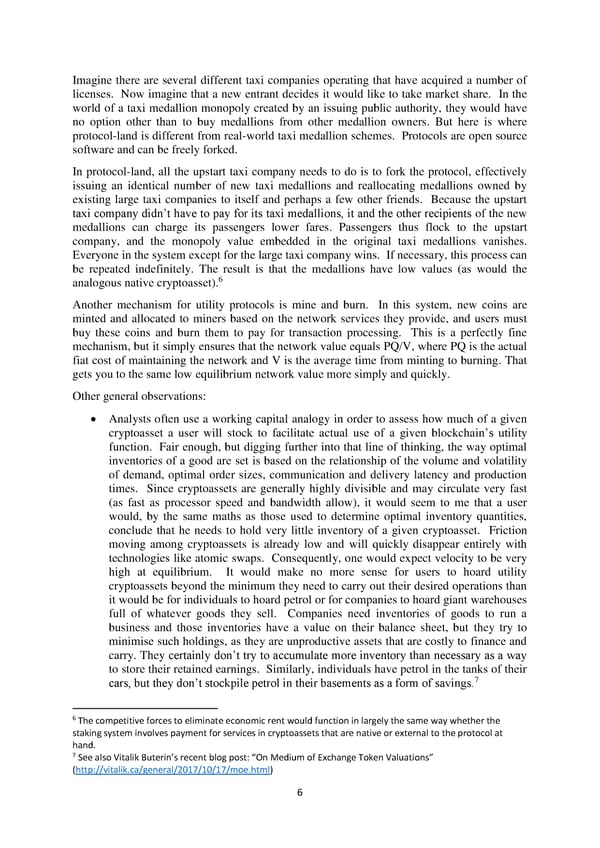Imagine there are several different taxi companies operating that have acquired a number of licenses. Now imagine that a new entrant decides it would like to take market share. In the world of a taxi medallion monopoly created by an issuing public authority, they would have no option other than to buy medallions from other medallion owners. But here is where protocol-land is different from real-world taxi medallion schemes. Protocols are open source software and can be freely forked. In protocol-land, all the upstart taxi company needs to do is to fork the protocol, effectively issuing an identical number of new taxi medallions and reallocating medallions owned by existing large taxi companies to itself and perhaps a few other friends. Because the upstart taxi company didn’t have to pay for its taxi medallions, it and the other recipients of the new medallions can charge its passengers lower fares. Passengers thus flock to the upstart company, and the monopoly value embedded in the original taxi medallions vanishes. Everyone in the system except for the large taxi company wins. If necessary, this process can be repeated indefinitely. The result is that the medallions have low values (as would the analogous native cryptoasset).6 Another mechanism for utility protocols is mine and burn. In this system, new coins are minted and allocated to miners based on the network services they provide, and users must buy these coins and burn them to pay for transaction processing. This is a perfectly fine mechanism, but it simply ensures that the network value equals PQ/V, where PQ is the actual fiat cost of maintaining the network and V is the average time from minting to burning. That gets you to the same low equilibrium network value more simply and quickly. Other general observations: • Analysts often use a working capital analogy in order to assess how much of a given cryptoasset a user will stock to facilitate actual use of a given blockchain’s utility function. Fair enough, but digging further into that line of thinking, the way optimal inventories of a good are set is based on the relationship of the volume and volatility of demand, optimal order sizes, communication and delivery latency and production times. Since cryptoassets are generally highly divisible and may circulate very fast (as fast as processor speed and bandwidth allow), it would seem to me that a user would, by the same maths as those used to determine optimal inventory quantities, conclude that he needs to hold very little inventory of a given cryptoasset. Friction moving among cryptoassets is already low and will quickly disappear entirely with technologies like atomic swaps. Consequently, one would expect velocity to be very high at equilibrium. It would make no more sense for users to hoard utility cryptoassets beyond the minimum they need to carry out their desired operations than it would be for individuals to hoard petrol or for companies to hoard giant warehouses full of whatever goods they sell. Companies need inventories of goods to run a business and those inventories have a value on their balance sheet, but they try to minimise such holdings, as they are unproductive assets that are costly to finance and carry. They certainly don’t try to accumulate more inventory than necessary as a way to store their retained earnings. Similarly, individuals have petrol in the tanks of their cars, but they don’t stockpile petrol in their basements as a form of savings.7 6 The competitive forces to eliminate economic rent would function in largely the same way whether the staking system involves payment for services in cryptoassets that are native or external to the protocol at hand. 7 See also Vitalik Buterin’s recent blog post: “On Medium of Exchange Token Valuations” (http://vitalik.ca/general/2017/10/17/moe.html) 6
 Investor’s Take on Cryptoassets by John Pfeffer Page 5 Page 7
Investor’s Take on Cryptoassets by John Pfeffer Page 5 Page 7